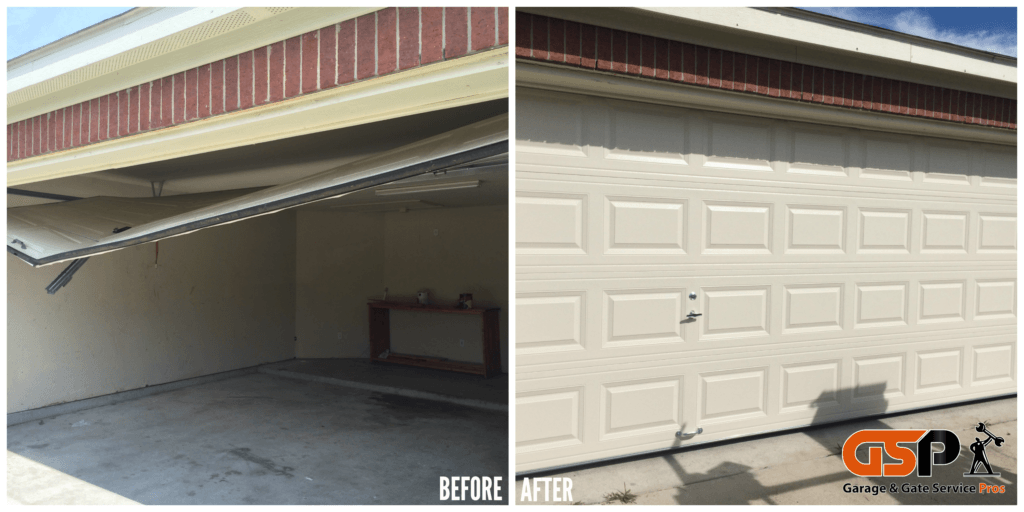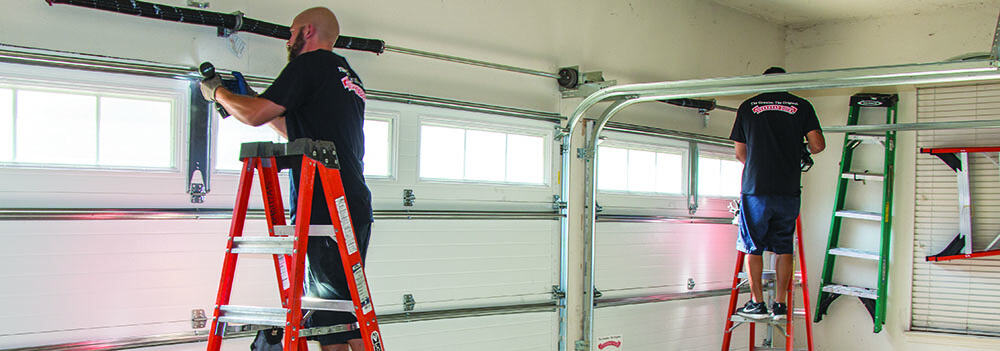Typical Garage Door Issues and How to Repair Them
Garage doors are important for both safety and security and convenience, yet they typically offer a variety of common issues that can discourage property owners. Troubles such as extreme noise throughout operation, doors that fail to open or close, misaligned tracks, and malfunctioning remotes can emerge without caution. While some problems might appear uncomplicated to solve, others may require a much more nuanced understanding of garage door technicians. Attending to these problems successfully not only boosts functionality however likewise extends the life of the door. One might question what steps are required to take on these difficulties effectively.
Noisy Garage Door Operation
A noisy garage door procedure can be a significant source of nuisance for house owners, often showing underlying mechanical problems. Such interruptions may stem from numerous reasons, consisting of damaged rollers, loose hardware, or insufficient lubrication. Determining the resource of the sound is crucial for efficient resolution.
Over time, these parts can wear away, leading to grinding or squealing sounds as the door moves. Additionally, loose screws or screws in the door device can develop rattling sounds throughout procedure.
Another contributing variable is poor lubrication of the door's relocating components. Using a high-quality lube to the tracks, springtimes, and rollers can substantially lessen rubbing and sound. Home owners need to execute this maintenance regularly to preserve optimum performance.
Finally, the garage door opener might likewise produce sound due to its age or mechanical issues. If the noise lingers in spite of attending to various other aspects, seeking advice from an expert for a thorough assessment and prospective repair work might be needed.
Door Won't Open Up or Shut
Experiencing a garage door that will not open or shut can be extremely irritating and usually signals a malfunction within the system. A number of variables can add to this problem, and identifying the origin is essential for efficient resolution.

Following, check the safety sensing units located at the base of the door. These sensors can end up being misaligned or blocked by debris, protecting against the door from running appropriately. Tidy the sensors with a soft fabric and ensure they are aligned.
Furthermore, the garage door's interior parts ought to be reviewed. Problems such as a busted springtime, worn-out rollers, or a harmed opener can hamper activity. If any type of parts show up to be damaged, it may be a good idea to seek advice from a professional for repair work.
Misaligned Tracks
(Excellence Guaranteed)Misaligned tracks can significantly disrupt the smooth operation of a garage door, resulting in operational failings such as irregular activity or complete immobilization. This problem generally develops as a result of a selection of factors, including wear and tear, unintentional impacts, or incorrect setup. When the tracks are misaligned, the rollers can stagnate openly, which not just strains the electric motor but additionally postures security risks.
To recognize imbalance, aesthetically check the tracks for gaps or irregular spacing. If you see any discrepancies, it is vital to deal with the issue without delay - garage door service. Begin by loosening up the screws that secure the track to the wall surface, permitting modifications. Carefully touch the track back into its appropriate position utilizing a rubber club or a comparable tool, ensuring it is straight and level.
Normal upkeep, consisting of cleansing the tracks and making certain rollers are in great condition, can stop future imbalances. By addressing misaligned tracks quickly, you can recover the capability of your garage door and boost its durability.
Broken Springs
Amongst the numerous components of a garage door system, damaged springtimes are among the most usual issues that can substantially restrain its performance. Garage door springtimes are critical for balancing the weight of the door, enabling for smooth opening and closing. When a springtime breaks, it can lead to a door that is difficult to run or, in many cases, completely unusable.
There are 2 main types of springtimes: torsion springs, which are placed above look what i found the door, and extension springs, discovered on either side. Signs of a damaged spring include a door that won't open, a visible space in the springtime, or a loud sound during procedure. Attempting to operate a garage door with a broken spring can cause further damage to the door or the opener.
Repairing busted springtimes is not a do it yourself task; it calls for specialized devices and proficiency because of the high tension included. It is suggested to consult a professional technician that can securely replace the springtimes and make certain the door is effectively stabilized. Routine maintenance and assessments can assist prevent spring failings and extend the life-span of the garage door system.
Remote Issues

If the remote still stops working to run, check the garage door opener to make sure that its sensors are tidy and unobstructed. Dirt, debris, or misalignment may prevent the signal transmission between the remote and the opener.
Interference from various other digital tools can likewise impede remote capability. Make sure that close-by tools, such as wireless routers or cordless phones, are not triggering disturbances. garage door service. If disturbance is thought, try relocating these gadgets additionally away from the garage door opener
Sometimes, the remote might need to be reprogrammed. Get in touch with the maker's standards to reset the push-button control and synchronize it with the garage door opener. If all else falls short and the remote remains to malfunction, think about consulting an expert specialist for a complete examination and prospective replacement of the remote or opener.
Final Thought
(Prompt Attention)In summary, typical garage door troubles can considerably affect functionality and safety and security. Dealing with noisy operation entails lubrication and tightening up hardware, while issues with opening or closing require assessment of source of power and sensing units. Misaligned tracks can be corrected with modification, although busted springtimes necessitate specialist intervention. Push-button control malfunctions usually emerge from weak batteries or disturbance, which can be fixed with replacement or reprogramming. Proactive maintenance and timely fixings can make certain ideal efficiency and long life of garage doors.